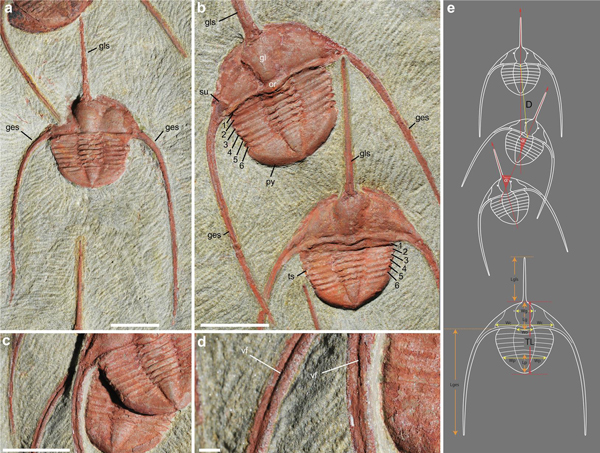Exceptional and Rare Trilobite Fossils From Morocco Reveal Collective Behaviour
Linear Clusters of Trilobites (Ampyx priscus)
Collective behaviour is seen in all kinds of animals today. Birds migrating, plagues of locusts, turtle nesting behaviour, social insects and such like, but when and how such complex collective behaviour in the animal kingdom evolved remains a mystery. A team of scientists writing in the academic journal “Scientific Reports”, have published a paper on a series of trilobite fossils from south-eastern Morocco, that have been interpreted as showing collective, social behaviour amongst a group of 480-million-year-old trilobites.
Trilobite Fossils from the Lower Ordovician – Possible Collective Behaviour

Picture credit: Scientific Reports
Trilobites Travelling in Columns
Social behaviour is seen in many arthropods and other types of invertebrate today. Termites and ants living in colonies, communities of bees and wasps and many types of crustacean migrate in cohorts gaining protection against predators by their sheer weight of numbers. For example, hundreds of spiny lobsters line up for their annual migration through the blue waters of the Caribbean. Each lobster maintains contact with the one in front with its antennules and the anterior legs. Thus, even at night the migration can continue without disruption.
The scientists have interpreted a series of fossils showing linear clusters of Ampyx trilobites as collective behaviour. The fossils come from the Fezouta Shale (upper Tremadocian-Floian stage) and consequently are dated to around 480 million years ago.
Studying Trilobite Fossils
Passive transport of the corpses of these ancient arthropods has been discounted by the researchers, instead, they conclude that this trilobite was probably migrating in groups and using its long spines to maintain a single-row formation. Physical contact might have been reinforced with chemical communication, which is known to occur in some types of arthropods today.
This group behaviour may have been a response to environmental stress due to periodic storms shown by sedimentological evidence associated with the fossil deposits, or perhaps these animals were migrating together to reach favoured spawning grounds.
This record of linear clustering in early euarthropods suggests that intraspecific group-level patterns comparable to those of modern animals already existed 480 million years ago in the early stages of the Great Ordovician Biodiversification Event.
Interpretative Line Drawings of Trilobite Linear Clusters
Picture credit: Scientific Reports
The scientific paper: “Collective behaviour in 480-million-year-old trilobite arthropods from Morocco” by Jean Vannier, Muriel Vidal, Robin Marchant, Khadija El Hariri, Khaoula Kouraiss, Bernard Pittet, Abderrazak El Albani, Arnaud Mazurier and Emmanuel Martin published in Scientific Reports.
The Everything Dinosaur website: Everything Dinosaur.


